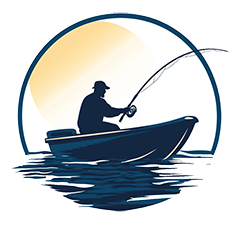Exploring the art of catching fish without modern tools unveils a realm where ancient wisdom meets practicality. As we delve into the realm of traditional fishing methods, a tapestry of skills and techniques emerges, each thread woven with the expertise of generations past. From the subtle finesse of hand-catching to the precision of spearfishing, these methods offer a glimpse into a world where resourcefulness and ingenuity reign supreme. Join this journey to uncover the secrets of our ancestors and discover the timeless allure of sustainable fishing practices.
Table of Contents
Hand Fishing Techniques
Hand fishing, also known as noodling, is a traditional fishing technique that involves capturing fish with bare hands instead of using modern tools such as fishing rods. This method, popular among various American tribes, particularly for catfish, requires individuals to wade into shallow waters and feel for fish hiding in underwater crevices. Through a combination of patience, skill, and understanding of fish behavior, practitioners of hand fishing can successfully catch fish without the aid of traditional fishing equipment. The art of noodling is a primitive fishing method that showcases a direct approach to catching fish, emphasizing the primal connection between humans and nature. Trout tickling, a similar technique, also falls under the realm of hand fishing, highlighting the diverse methods used to catch fish without modern tools. Passed down through generations, hand fishing traditions not only provide sustenance but also hold cultural and historical significance, preserving the essence of traditional fishing practices.
Spearfishing Methods

Spearfishing, an ancient fishing technique dating back thousands of years, involves the use of specialized tools to capture fish underwater. Historically, harpoons have been pivotal in this method, with records dating back 16,000 years in India and France. Native American tribes such as the Hupa have been utilizing spearfishing for over a millennium, highlighting the enduring legacy of this traditional practice. The development of fishing hooks, spanning over 22,000 years, has further refined fish-catching techniques. Around 800 BC, the Greeks contributed significantly by studying fish migration patterns, enhancing the understanding and efficiency of spearfishing. Today, spearfishing remains a global practice that continues to evolve, incorporating modern materials to improve effectiveness in capturing fish. The evolution of spearfishing techniques showcases a blend of ancient traditions and contemporary advancements, making it a versatile and enduring method for fishing enthusiasts worldwide.
Fish Trapping Strategies
The practice of fish trapping strategies involves utilizing natural resources and understanding fish behavior to effectively capture fish without the use of modern tools. By setting up fish traps in strategic locations where fish tend to congregate, such as near underwater structures or in shallow areas, individuals can increase their chances of a successful catch. It is crucial to consider fish behavior and migration patterns when placing traps to optimize their efficiency. Monitoring these traps regularly is essential to prevent fish from escaping before retrieval.
Utilizing materials like rocks, twigs, and reeds, individuals can create effective traps that blend into the underwater environment, making them more appealing to fish. Adapting fish trapping techniques based on available resources and environmental conditions further enhances the likelihood of a successful catch. By combining an understanding of fish behavior with strategic trap placement and regular monitoring, individuals can improve their efficiency in catching fish without relying on modern tools.
Gorge Hook Utilization

Gorge hooks, ancient fishing tools crafted from sharpened sticks or bones, have stood the test of time as effective instruments for capturing fish without modern equipment. The technique of using gorge hooks involves the fish swallowing the hook whole, allowing it to become lodged in their throat. This method has been an essential part of ancient fishing techniques for thousands of years, showcasing the ingenuity and resourcefulness of early fishermen faced with the challenge of catching fish to swim into their hands.
In a survival situation, gorge hooks can prove to be the ultimate survival tool, offering a simple yet effective fishing method without the need for elaborate gear. By carefully crafting these hooks from natural materials, fishermen can increase their chances of a successful catch. The ancient practice of gorge hook utilization highlights the timeless effectiveness of this fishing technique, making it a valuable skill for those seeking to fish without modern tools.
Net Fishing Approaches

Net fishing approaches encompass a variety of traditional methods employed for centuries to capture fish in diverse aquatic environments, utilizing specialized nets tailored to different fishing conditions and targeted species. Fishing nets come in various types such as cast nets, gill nets, and seine nets, each serving specific purposes in catching fish. The design and material of these nets play a crucial role in determining the success of the catch, with factors like mesh size influencing the type of fish caught. Fishermen strategically position nets to encircle fish schools or create fish traps, leveraging their understanding of fish behavior to optimize catches. Sustainable fishing practices emphasize responsible net usage to prevent overfishing and maintain marine ecosystem health. Proper maintenance of fishing gear, including nets, is essential for ensuring long-term sustainability in fishing practices. By employing the right net fishing approach and understanding the nuances of fish swimming patterns and habitats, fishermen can effectively catch more fish while conserving aquatic resources.

